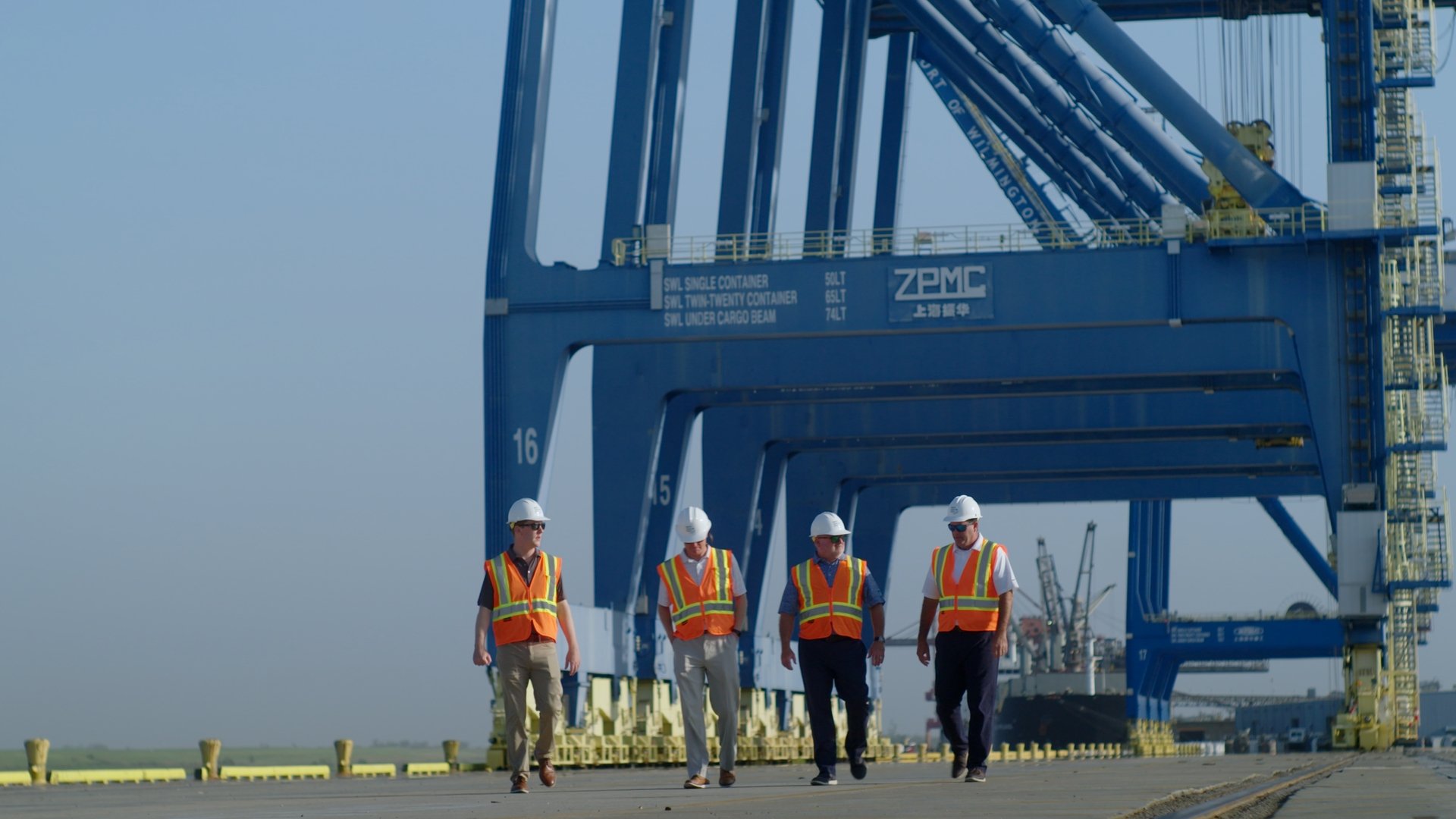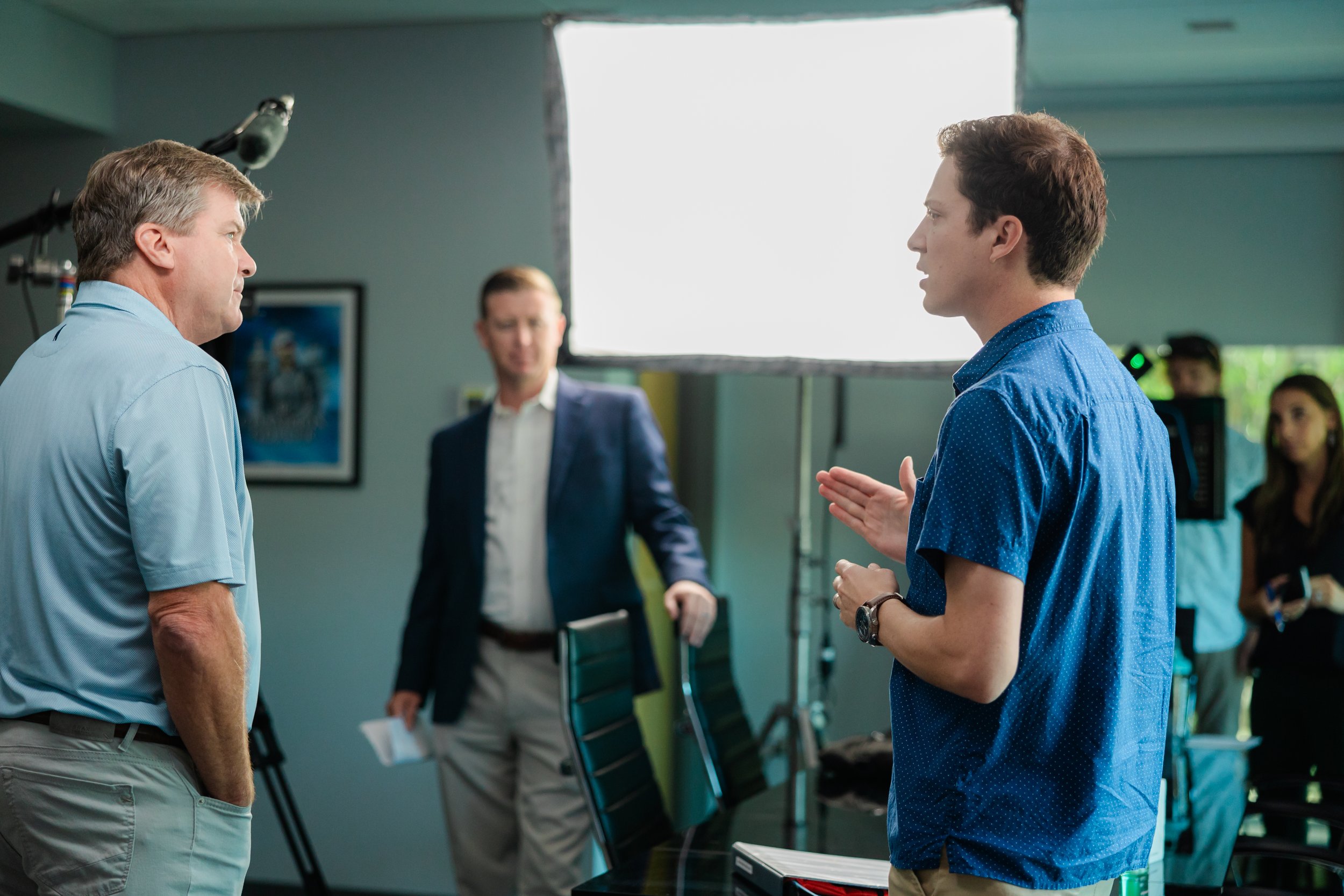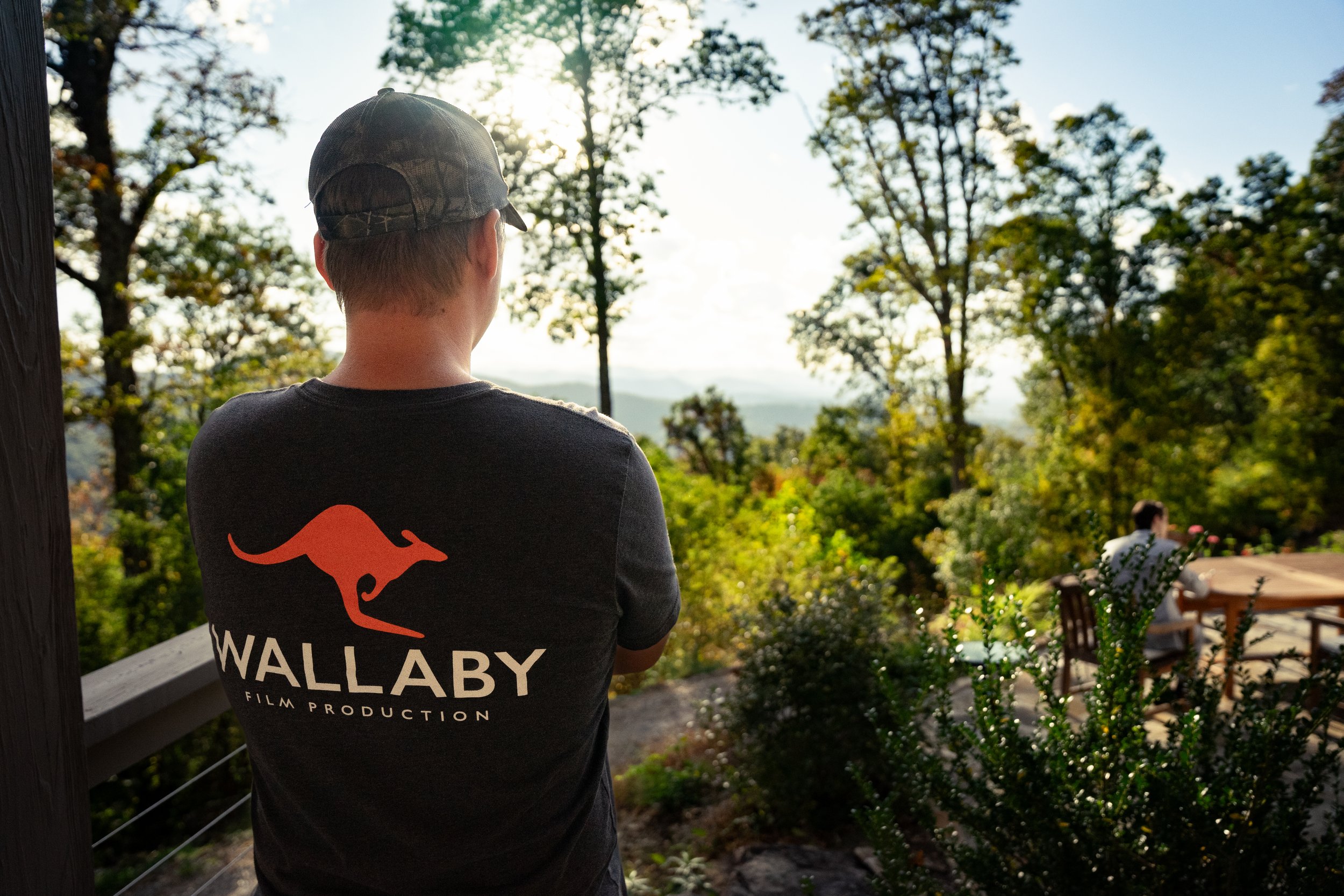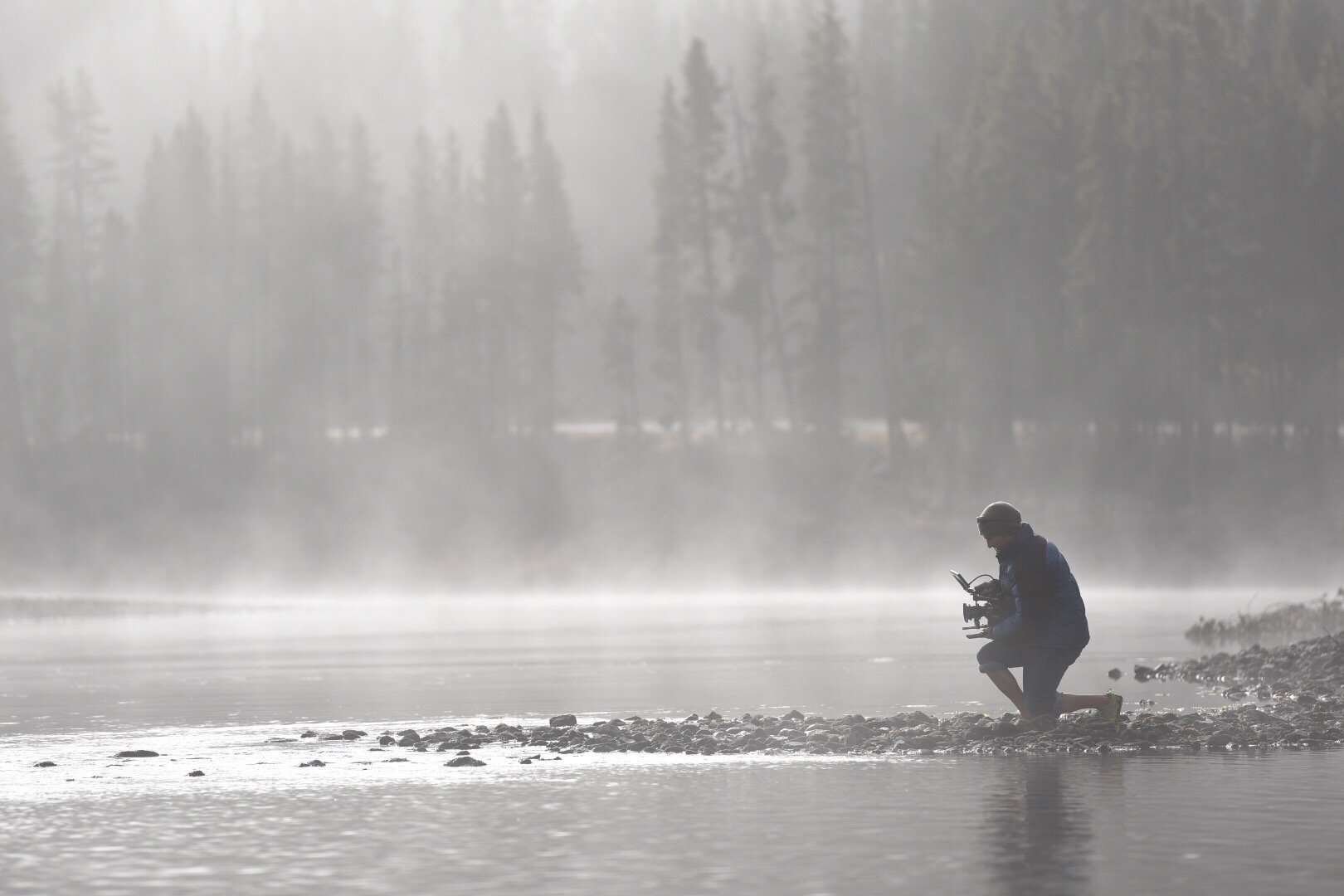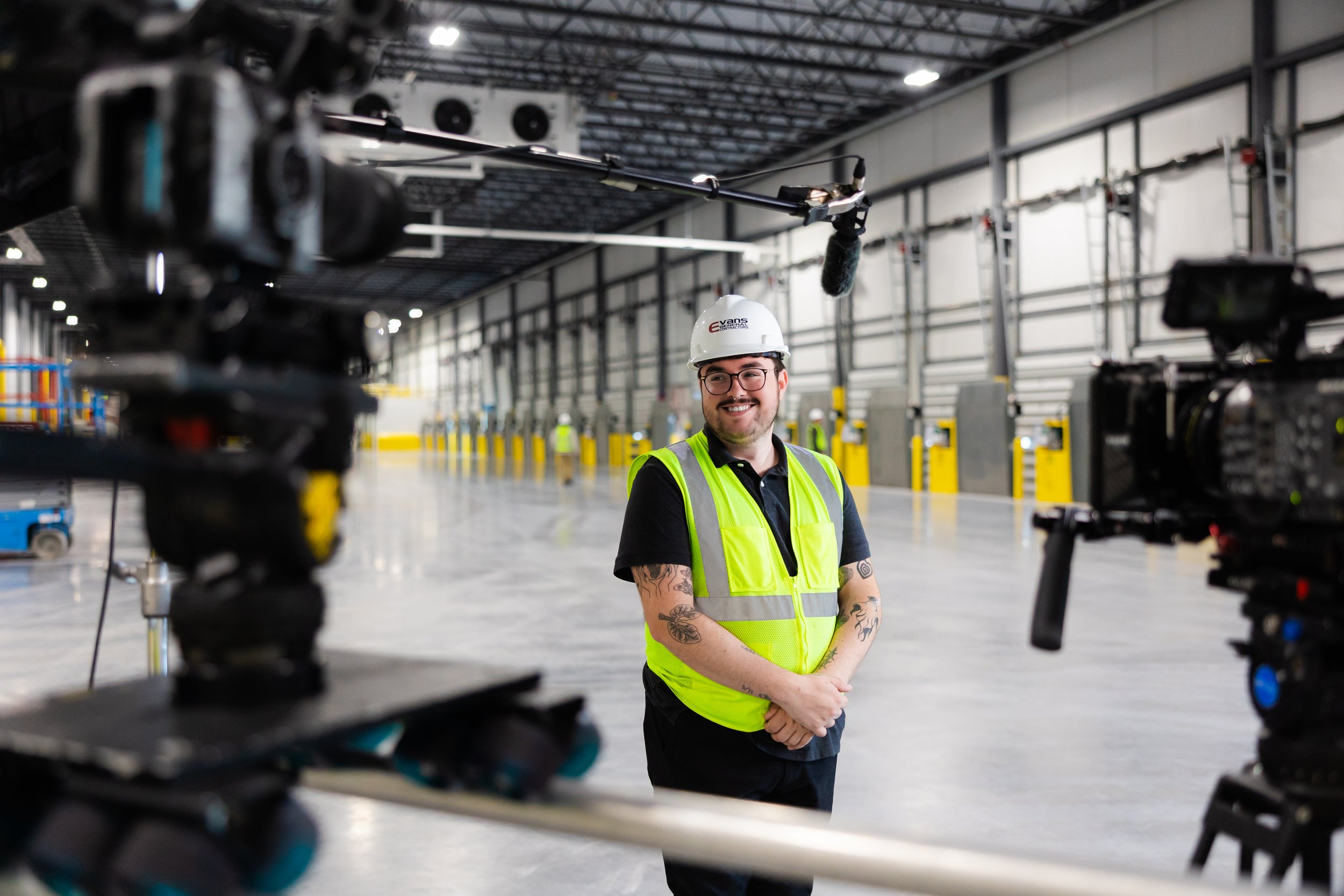
Our video production process
Everything you need to start your video
Videos can vary wildly. From what they are about, to what they are designed to do and where they are going to play. With over a decade in business, we’ve worked with clients at all levels on a wide range of video projects. From agencies with detailed concepts and storyboards to regional businesses who know they need a video, but have no idea where to start. Here we will give you an overview of the process of producing a video with Wallaby, from first reaching out to the final approval of the finished video.
Step 1: Getting started
So you know you want to produce a video. Whether you a producing a promotional or marketing video, broadcast commercial, social media campaign, B2B video or internal video, we follow the same steps.
To get started, first think about what you want. What is the point of the video, who is the audience and where do you want people to see it? Is the point of the video to introduce people to your brand, a product, a special you have going on? Is the audience your customer base, a certain group of investors or donors or the general public? Will it be seen on homepage of your website or instagram where you need to produce a video that doesn’t rely on audio and may have abnormal aspect ratios? Or is it going to be debuted on broadcast, CTV or a company meeting?
You don’t need to know the answer for all of this, we can definitely help you. But thinking about these things will give our team a lot more to go on when moving through the production process.
Note: When Should I reach out to wallaby?
Because we focus on client relationships and understanding your brand to help tell you story best, we love being brought into the process as early as possible. It’s never too early to reach out to us. That said, we are comfortable hopping in anywhere that our team is needed along the way. This may be for only pre-production, production, post or the whole process.
Step 2: The Concept
A great video tells a great story. Do you know what the story for your video will be? Do you know how you want to tell it visually?
We have clients at all stages of the concept phase reach out to us. Some clients have this completely figured out already. They may have an outline, script and/or a storyboard, and once they send that to us we begin putting together budget options. Other clients may have no clue and want to know our thoughts on it, that is fine too! After an exploratory call, we will suggest some concept approaches that will give us enough to provide budget options, which is the next step.
Some concepts require a script or a storyboard, and that is it. This is true on many of our higher budget commercial projects. Others, such as many of our promotional videos, actually just work off of an simple outline with topics we will ask the people we interview and what type of visuals we want to see. This is because they are more documentary in nature.
What we need from the concept stage, depends on the video that we are producing for you.
Step 3: The Budget
After the concept is decided on the Wallaby team will get to work on putting together a few budget option for you to review. There are two main approaches we take to developing a budget for our clients.
Approach 1: Target Budget Range
This is our preferred method of working. Film productions can be everything from huge crews with trucks of equipment that cost hundreds of thousands of dollars, or they can be lean 2 person teams with only the most essential equipment that costs a few thousand for everything. Knowing our clients’ budget range allows us to hone in on a budget that gives them the most capabilities for their available budget.
Approach 2: Wallaby Presents Budgets
Some clients have no idea what to budget to get the video quality they want. That’s no problem, we’ve worked with many clients in the same situation. After the concept is decided on we will present three budget options in different ranges and let our clients choose the combination of production capabilities and cost that works for them and their goals.
Regardless of the approach you choose, our team will be upfront with what we are capable of for that budget, what the limitations and advantages are, and options to save money and opportunities to make the budget go further.
Budgeting tips
Best way to save money
The number one cost driver of any video production project is how many shoot days there are. This is due to the cost of any crew, locations, cast, equipment, craft services, set needs, etc. Our recommendation for saving money is always how to best cut down production days while still getting the final product you want. Another great way to save money is by being a retainer client of ours. This is often best if you have 2 or more shoots a year and various edit deliverables from those shoots.
Included in a quote
All of our video production budget options are all-inclusive. If this is a full service project (meaning we provide everything) then our budget provides for everything. This includes scheduling, budgeting, shooting and additional prep work, all the cast, crew, equipment and production needs and all the editing such as color, sound, various edits, 3 revisions, etc. In short, our production stick to the number we agree too and it only changes if the concept or video needs change.
How Does Payment work
Once a concept and budget option are selected, the Wallaby team will send a production agreement for both parties to review and sign. At that time there will also be a deposit due. Deposits can be 50% of the project or 40% depending on the total budget and the client’s needs. If there are three payments the second one is due on the shoot day and the third one is due after client approval of the final edit. If there are two, the second payment is the final approval of the finished videos.
More for the money
The best way to get more video content from your money is to plan to have multiple video deliverables from one shoot day. Perhaps you are filming a few testimonials. Go ahead and plan to have cut downs for socials media, a visual reel for the landing page and a version that combines them as well as has them seperate. None of these add any shoot time, so the cost increase is minimal and you end up having much more content for the money. Another way to save money is with our retainer program.
Step 4: Pre-Production
Pre-production is often what seperates a good video from a great video. It is one of the most overlooked steps in the production process, yet one of the most important.
During pre-production the Wallaby team focuses on getting everything in place to bring your concept to life at the budget level you decided on. This includes the equipment and crew, cast and locations and whatever else your video calls for. We also work with you to develop a schedule that maximizes the amount of content you can get on your shoot dates. We balance this with what times of day work best for filming our subject.
During this process our team will often scout the locations to plan the shots, as well as generate all the pre-production documents we will need: from image and location releases, to shot lists, schedules and call sheets.
We pride ourselves on our pre-production skills and it’s one of the reasons our crews love working with us, and we consistently deliver great videos for our clients. It may not be the flashiest part of producing a video, but if a production isn’t well planned - it shows in the final product.
Step 5: Production
Production is the actual shoot. This is when the cast, locations, cameras, lenses, lighting, grip and crew all come together to bring the vision we created in pre-production to life. Due to all of these resource, this step is often where a good portion of each project’s budget is spent. The number one way to reduce a project’s budget is to reduce the number of shoot days.
The scale of production can vary depending on the time of project. If it is an corporate facing video or a testimonial, 2 or 3 crew and a small amount of equipment may be all that is needed. If the project is tv pilot, documentary or high end commercial then it may require more production resources. This could include additional equipment, crew, travel expenses, cast, etc. All of these expenses would have been known during the selection of the budget, so everything should already be accounted for.
Production days are often 10-12 hour days, and can be long, but seeing a vision come to life is a rewarding process.
Step 6: POST-PRODUCTION
Post-production is everything that gets the footage you shot into the video you wanted. It includes backing up the media on servers, editing, sounds design, graphics, titles, visual effects, animation, color correction and whatever else the particular project calls for.
Editing is one of the most time consuming aspects of the process, especially on larger projects. We go through every part of every clip shot, pulling the best of what we need whether it’s an interview line, visual shot or performance. Our goal is putting together a video that is true to your story and can look great on any screen, whether it is on a theater, tv, phone or tablet.
Many production companies will rush this part of the process to get to their next job - not us. Our relationship building approach means we spend time making sure we see the production process through, and we aren’t happy until you are. All deliverables come with three revisions so we can make sure we get it right.
Step 7: DELIVERY
What good is a great video if no one ever sees it? In the delivery phase we make sure your video is setup to look great wherever you intend to display it.
This could include doing different size versions for Facebook, Instagram, Youtube, your website or whever you want the video to live. This could be portrait, vertical, horizontal or any atypical aspect ratio depending on the application.
We also help make sure to meet necessary size and resolution requirements so you can rest assured your finished video, that we all put so much work and resources into, will look amazing and engage your target audience.
From there we can offer suggestions or connections on media buying, ad placement, distribution and off you best practices for rolling your video out to your audience.
Step 8: making your video go further
After your video is completed and delivered, that isn’t the end. With that footage, you may now have new opportunities to incorporate the footage in ways you hadn’t thought of - without doing another shoot. This gives you the opportunity to have more content without spending more. Many production companies make the deliverables, hand them over, and that’s the end of the story - not us. We are always looking out for opportunities to make you video content go further, while saving you money.
A perfect example of this would be if you shoot a promotional video for your brand featuring testimonials with clients. From this one shoot you could have the following:
- the original promotional video
- various 15 second social media and promo cutdowns
- individual testimonials from each client featuring sound bites not heard in the original video
- a video only reel of footage to feature as a banner on your website or specific web pages
All of this different content can come from that one production. It’s just additional editing of existing assets. This is why we place such an emphasis on understanding our clients. The days of video production being a one time deal are done - it is an ongoing conversation and partnership. We keep all footage logged and organized for future use so we can make sure every production dollar you spend goes as far as possible. For more information on this, you can read about our retainer approach.

Ready to get started on your next video Project?
Wallaby is here to help you get started. Feel free to reach out to ask any video production questions or advice, or you can reach out to us for an estimate on a project you have in mind.
You can reach out to us using the contact form here or giving us a call. We look forward to hearing about your video project.


